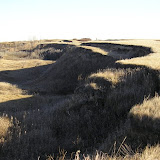Telling Our Story: Saskatoon’s Immigration Sculptures

I’m a weekly visitor to the Saskatoon Farmers’ Market , part of an evolving redevelopment of the City’s South Downtown . It’s a delight to watch as the riverfront walkway is expanded and new features are added. There are two wonderful sculptures adjacent to the Farmer’s Market, which celebrate some of the City’s earliest residents. Egg Money Egg Money is a particularly appropriate addition to the Farmers’ Market. Designed by Don and Shirley Begg and donated by the German community of Saskatoon, it honours the resourcefulness of Prairie women and their children, who raised chickens and sold the eggs to buy essential items for their families. Storytelling Chairs The Storytelling Chairs , designed by Jyhling Lee and Paul Koopman, are part of the courtyard behind the Farmers’ Market. They’re a great place to sit and eat your breakfast on a sunny Saturday morning, but they also tell the story of the Immigration Hall, which used to stand on the site (now outlined in stone). ...




